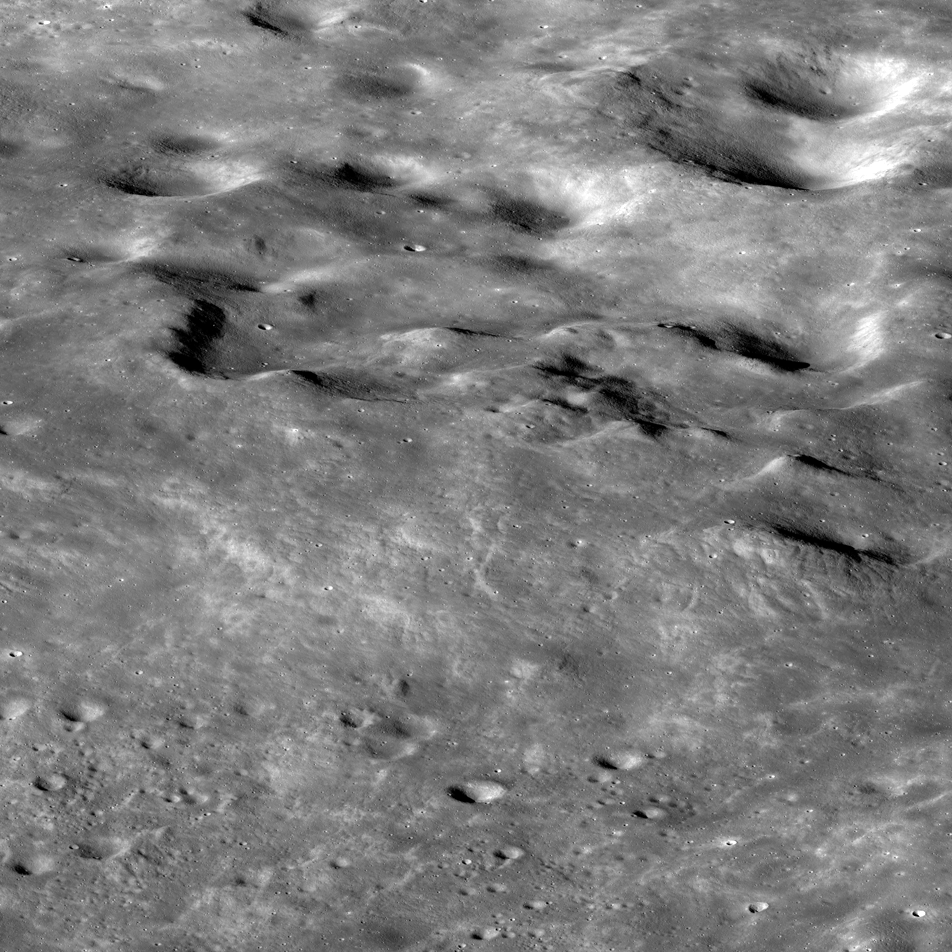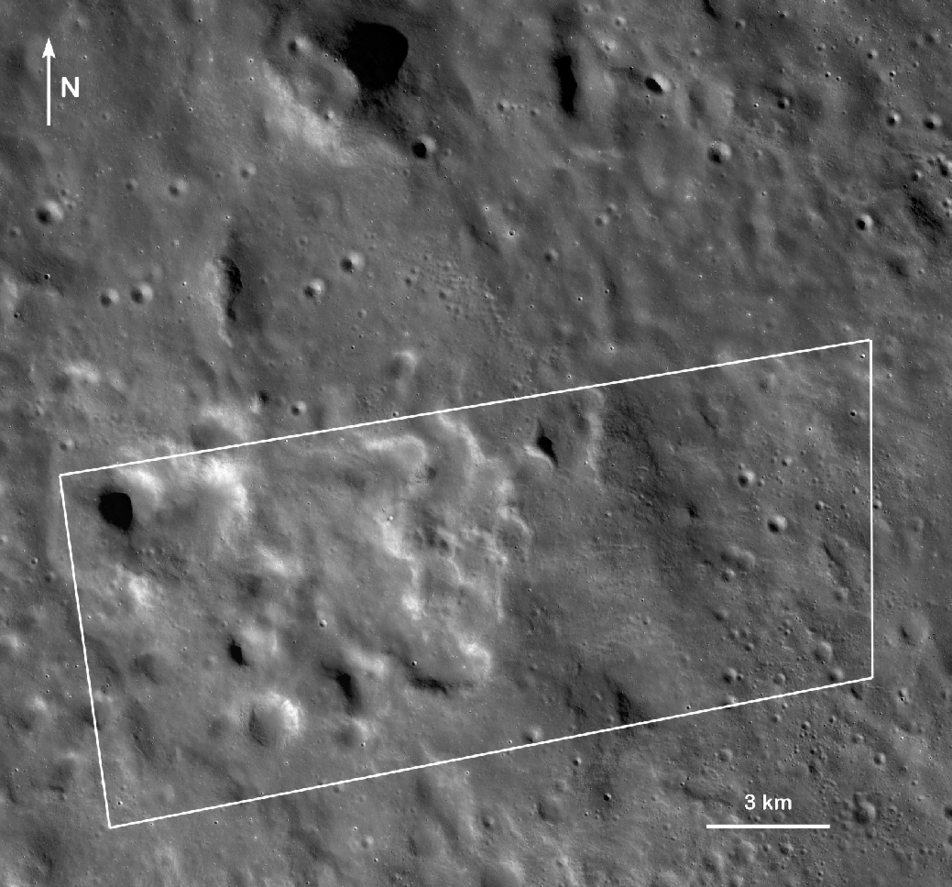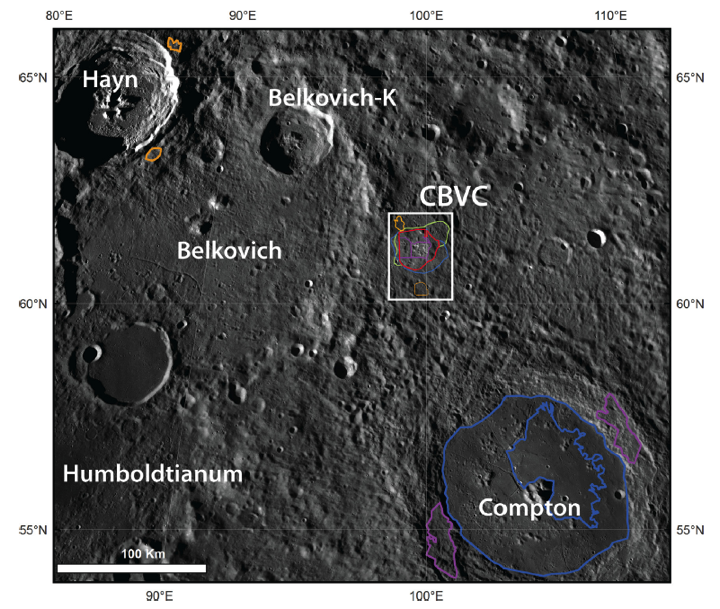
One of the early discoveries during the LRO mission was the small silicic volcanic complex situated between the farside craters Belkovich and Compton. Previously, the area was known to be a thorium anomaly from Lunar Prospector (LP) gamma-ray spectrometer maps. From the LP maps, LRO Diviner thermal measurements, and LROC imaging, the science team was able to determine that the area was formed as a sprawling volcanic complex with a silicic (possibly rhyolitic) composition, similar to a handful of locations on the Moon’s nearside (like the Marian Domes, the Gruithuisen Domes, and especially the Lassell Massif) and distinct from the predominantly basaltic volcanism that is typical of the Moon.

Within the Compton–Belkovich Volcanic Complex (CBVC), many areas exhibit relatively high reflectance, and at NAC resolution, show a paucity of small impact craters. The reflective character is associated with the silicic composition of volcanic materials at the CBVC. The initial observation of fewer than expected small impact craters led to the question "What is the age of the CBVC; might it represent an example of relatively young volcanism on the Moon?"
Absent any samples for laboratory analysis, the next best way to determine the age of a geologic feature is to consider stratigraphic relationships with other nearby geologic features that can help bracket the age (what formed before what). Also, by counting and measuring the impact craters on a surface one can estimate its absolute model age. In a recently published article in the LRO special issue of Icarus, Shirley et al. did just that and determined that the CBVC most likely formed about 3.5 billion years ago. This estimate came from analyzing the crater population on the CBVC, and from incorporating stratigraphic constraints from nearby large craters.
For the stratigraphic constraints, it was determined that ejecta deposits from nearby Compton crater (see image below) are absent from the CBVC, indicating that Compton crater is older than the CBVC. Compton has a well defined absolute model age of 3.6 billion years. Ejecta deposits (secondary crater chains) from nearby Hayn crater, however, are observed to overprint the CBVC. Hayn crater formed about one billion years ago, thereby bracketing the time of formation of the CBVC at between 1 and 3.6 billion years ago – still quite a wide range!

Crater counts for the surface of the CBVC itself allow analysts to narrow the age estimate, though there are pitfalls to interpreting crater counts on relatively small areas. Considering only the largest craters, those over 300 m in diameter, and considering only those circular depressions that are clearly impact craters, Shirley et al. estimated an age of about 3.5 billion years, just slightly younger than Compton Crater. On the other hand, the smaller craters, which are revealed in the high resolution NAC images, were found to be less abundant than expected for a surface that formed so long ago. One possible explanation for this discrepancy is that the surface materials covering much of the CBVC have physical properties or experience physical processes that result in the faster degradation of small craters compared to other locations. Another distinct possibility is that the area was thinly blanketed with pyroclastic (volcanic) ash, which formed a soft and loose surface deposit, within which craters quickly degrade. Such a phenomenon has been observed in other areas where pyroclastic deposits occur.
Shirley et al. noted one more complication. When they examined the size and frequency of all of the circular features that might possibly be impact craters, even though perhaps very degraded, the age indicated is about 3.8 billion years. They interpreted this result to mean that the volcanic activity of the CBVC 3.5 billion years ago did not completely resurface the area, so a few of the largest craters from the pre-volcanism surface are still visible. The age of 3.8 billion years probably represents resurfacing due to the formation of the very large, 200-km-diameter Belkovich Crater, which sits just to the west of the CBVC, and along with Compton gives the Compton–Belkovich feature its name.
Perhaps someday we can visit this fascinating geological site on the Moon with humans or robotic landers and explore all of the history that is recorded in the area. For now, explore the full-resolution NAC image below!
For the crater size–frequency data and additional discussion of the ages, see the article published as part of the new LRO special issue of Icarus:
Shirley, K. A., M. Zanetti, B. L. Jolliff, C. H. v. d. Bogert, and H. Hiesinger (2016) Crater size-frequency distribution measurements and age of the Compton-Belkovich Volcanic Complex. Icarus 273, 214-223. doi:10.1016/j.icarus.2016.03.015.
Related Featured Images:
Gruithuisen Domes – Constellation Region of Interest
New Views of the Gruithuisen Domes
Published by Brett Denevi on 29 June 2016